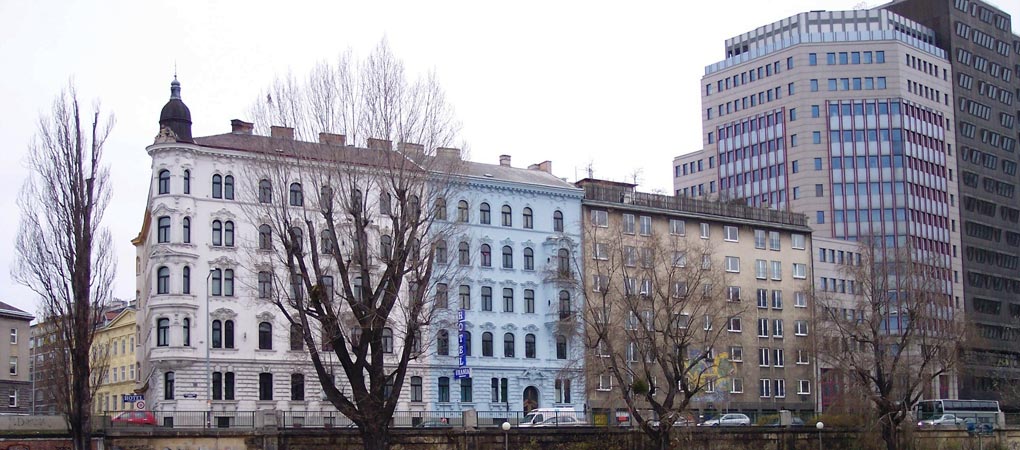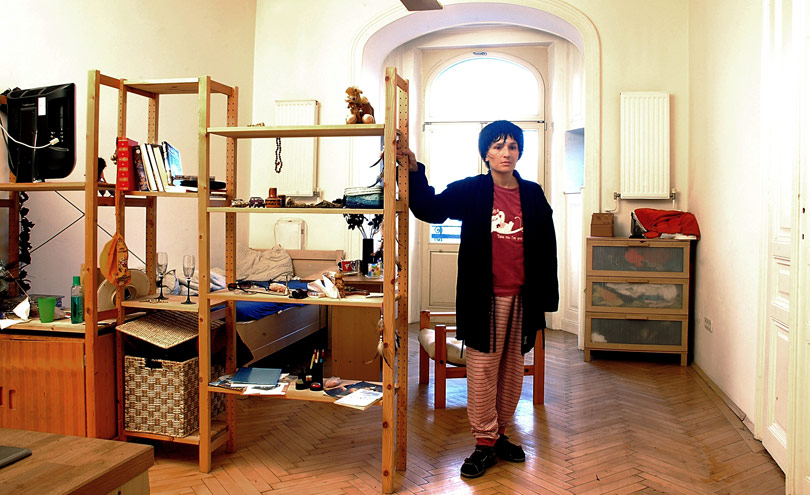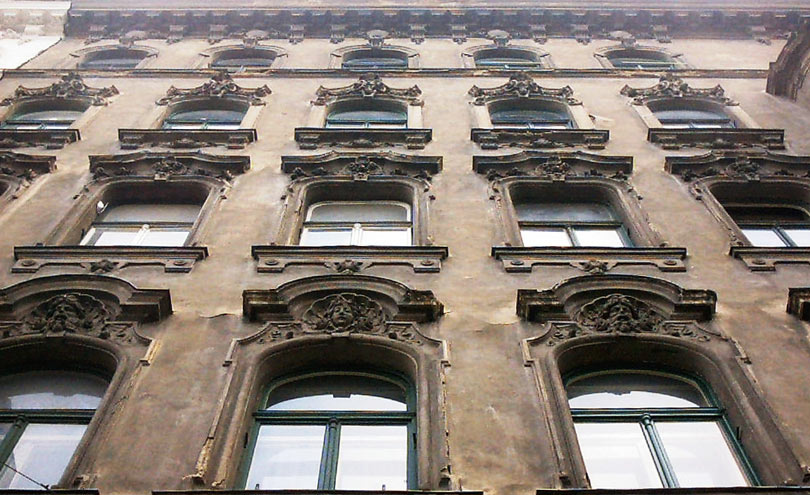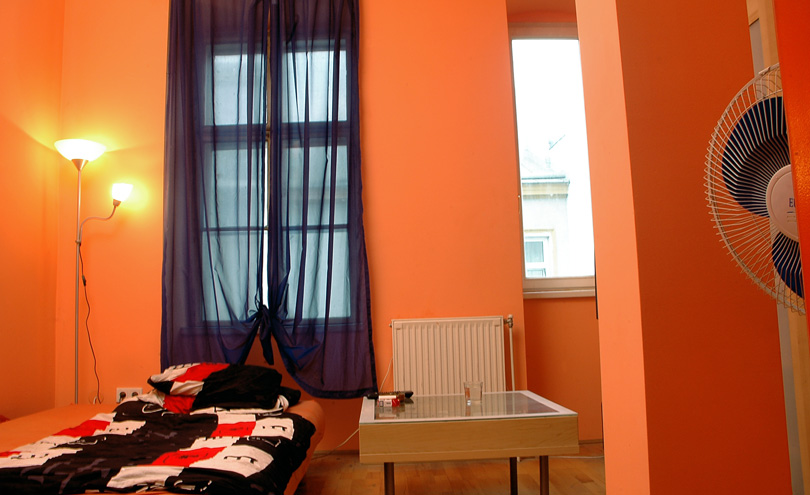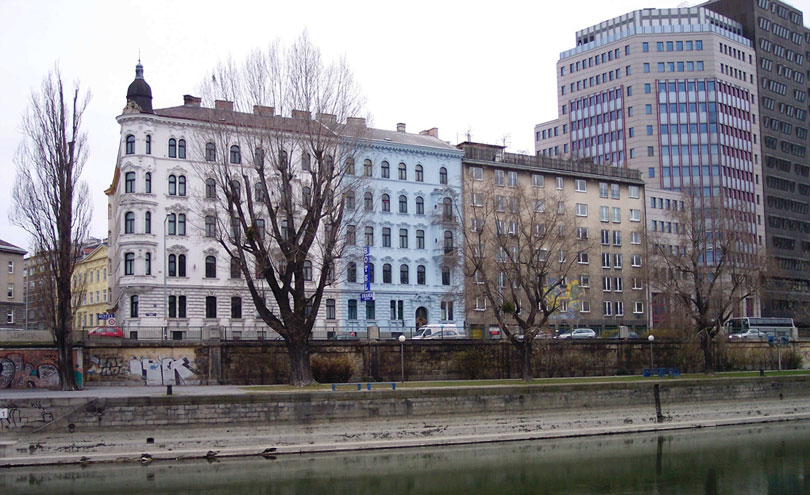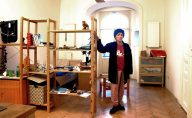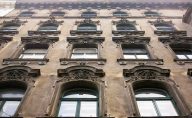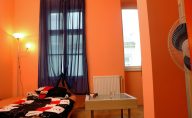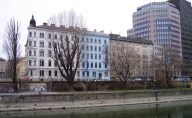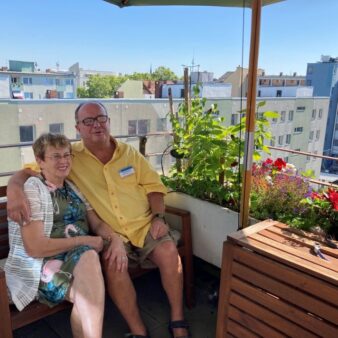Project Description
Aims and Objectives
To provide permanent accommodation with the appropriate level and type of support for homeless persons living with drug addiction problems, HIV and AIDS and /or mental health problems.
One of the largest projects of its kind in Europe, Lighthouse Wien provides accommodation for 60 individuals: 25 in apartments in four different locations in Vienna and 35 in a newly converted six-storey building. The renovation of this nineteenth-century building was carried out using environmentally sustainable principles to provide high quality accommodation for vulnerable persons with special needs (substance abusers, people living with HIV and AIDS, psychiatric patients without adequate care, prostitutes and released prisoners), many of whom had been homeless for years.
The building was in very poor condition and was leased at no charge by the owner who could not afford to refurbish it completely. Improvements to the property have been carried out in phases. Phase One was completed at a cost of €433,000 (US$523,000) and Phase Two at €277,000 (US$334,000). These costs have been met using a range of funding sources. A subsidy from the City of Vienna paid for sound insulation, adaptations for disabled accessibility and connection to the district heating scheme, amounting to 28 per cent of the total. The Lighthouse Foundation’s own resources paid for 35 per cent, loans covered 28 per cent and the owner contributed 10 per cent. The costs of €550,000 (US$664,000) for Phase Three of the project will be met from the Foundation’s own resources, the City of Vienna and the owner. Through careful design and volunteer help with some of the refurbishment, costs have been kept significantly lower than work on similar buildings of this type. The refurbishment includes the installation of new windows, heat and sound insulation, refurbishment of the street façade, use of passive and active solar systems and water- and energy-saving systems.
Residents are encouraged to individually design the colours and materials in their living space. Care is taken to ensure that the apartments should not have the atmosphere of a shelter for homeless people.
A wide range of medical and social support is provided, as well as training opportunities. The project focuses on the preservation of health through substitution and HIV therapy, on putting an end to crime, prostitution and social and psychiatric stabilisation. Detox and a life without drugs are a lesser priority. Pets are welcomed.
The first apartment for three residents was opened in March 2000 and today the project offers room for 60 persons.
Why is it innovative?
- Only housing project in Austria that specifically addresses the needs of people living with HIV and AIDS.
- Focus on the preservation of health rather than detox or reducing dependency.
- Social integration of residents in middle-class city centre residential areas.
- Development and use of the integrative care concept, which prevents residents having to move from one place to another to seek care and support.
- Environmentally sustainable building refurbishment.
What is the environmental impact?
The project involves the adaptive re-use of an existing building. Some of the demolition materials from within the house have been re-used (bricks, doors etc.) and the existing flooring has been renovated rather than replaced. Materials used are not harmful to human health and a healthy microclimate is created through greening of internal areas.
The project includes grey water recycling for toilet flushing and plant watering and solar thermal installation provides all basic hot water requirements. Passive solar design enables the storage of heat in the day and release at night. Guidance is provided to residents on energy saving, sensor lights, high-efficiency appliances etc. Connection to the district heating system in 2006 will eliminate all emissions caused by coal, oil or wood.
Is it financially sustainable?
Funding for the work of the organisation is drawn from a variety of sources, including revenue funding support from the Austrian social service system. The success of the organisation has attracted possible new supporters, including the Rotary Club, church organisations, large companies, banks etc.
Income for the residents is increased by helping residents to claim the state support that they are entitled to and assisting residents to make financially sound decisions (such as buying an annual bus pass which is cheaper and avoids the problem of being arrested and fined for non-payment of fares). Many of the residents are extremely vulnerable and it will be many years, if ever, before some of them can hold down full-time jobs. The more stable residents are given training and assistance in finding work.
This is the first housing project of its kind in Austria. Virtually all of the 60 residents housed to date were previously living on the streets. The provision of support enables residents to maintain their tenancies and not go back to living on the streets. There is no time limit on how long they can stay, although once they are more stable they are encouraged to move into external flats whilst continuing to receive support.
What is the social impact?
The main aim of the project is to encourage those on the edge of society to become part of mainstream society again. Social support is provided to enable residents to become part of the benefit support system and receive the benefits that are due to them as well as their entitlement to medical care and drug substitution. Support is provided for arranging appointments with doctors, public authorities, job centres etc. If the resident wishes, contacts are re-established with families and friends. Regular visits are made to the apartments by support workers and there are live-in staff at the main complex where the residents are less stable and more vulnerable. Targets and perspectives for the future are developed, for example: achieving a reduction in reliance on medical drug substitutes, buying a pet, moving into independent accommodation etc. Independence is achieved gradually until in some cases the resident is stable enough to move into his/her own apartment.
When first coming off the streets, each resident lives in a room in a shared flat in the main building. They may later move to a flat of their own in the main house or to an external shared flat. The more stable residents live in shared flats in external apartment blocks, near the main house. These shared apartments are cheaper than individual apartments but also give flatmates the opportunity to learn to live with other people and to have a certain amount of social independence. Individual apartments are also available for those who want them.
There is frequently initial resistance on the part of other inhabitants in the apartment block where the external flats are located. Three times the organisation has been taken to court in attempts to evict residents. However, this resistance does not usually last longer than three years. With time, the prejudices fall away and Lighthouse Wien residents are accepted. Some of the neighbours are very friendly and willing to help and one supplies the residents with food.
A flexible financial management system for the residents has been introduced to ensure that a month’s income is not spent within three days. Depending on each resident’s personal ability, money is handed out daily, every three days, every week or every two weeks with the aim of achieving completely independent financial management. Training is provided to residents to enable them to apply for jobs. Trips, excursions and leisure time activities enable residents to gain confidence and life skills.
There have been significant improvements in the health of this very vulnerable population with the provision of medical assistance, food and 24-hour support.
Drug management regimes have brought about significant increases in health. In 2004 five cases of hepatitis C were cured due to the social and psychiatric stabilisation of the residents. There have been fewer overdoses (twenty-four in 2001, two in 2004, and none in 2005) due to changes in the way in which personal finance is handled. Residents are able to live in much greater safety than their previous life on the streets. Apartments are integrated into existing residential areas, not near the urban drug markets. Barrier free access has been provided for those with walking disabilities.
Barriers
In the first three years of the project massive resistance was encountered from the City of Vienna, the authorities and the neighbours. This resistance has been overcome and both the City of Vienna and the neighbours have been convinced that the Lighthouse project is both serious and necessary. After five years of existence the Lighthouse was finally included in the official list of shelters for the homeless in August 2005.
Lessons Learned
- People with drug problems faced substantial problems before becoming addicted. In order to stabilise these people their problems have to be solved. Without solving the problems of these people it is not possible to stabilise them.
- Structural decisions secure survival, for example reducing the opportunity for unstable residents to have large sums of money at any one time reduces the number of overdoses.
- Since resources do not suffice to help all who need assistance it is important to concentrate on the weakest first and try to provide optimum help.
- The more beautiful the place of residence, the more likely the client will stabilise and take care of it.
- All rules have to be simple and clear in order to guarantee that they are observed.
- As much independence as possible, as much help as required.
- Everybody is different. Also among people who take drugs there are very reserved people. They have to be encouraged to accept help. Others on the contrary are very demanding. They have to be reminded that there are limits of what is possible and feasible. The Lighthouse tries to find an individual approach to the different people.
- Take people seriously, take notice of them and respect them. Empathy is the precondition for stabilising those who are weak.
Evaluation
Regular and careful internal monitoring is carried out on the organisation’s activities. Evaluation studies have shown that residents live longer and are healthier, both physically and mentally. Seventeen residents have moved on to independent living. Levels of crime and prostitution have been slightly reduced.
The City of Vienna has increased its efforts to improve the situation for the homeless at the urging of the organisation and others by establishing two new shelters for the homeless.
Transfer
The project started with an apartment for three residents but now provides places for 60. Plans are in place for another 230 places in seven different houses by 2011.
A housing project for homeless children living with HIV and AIDS is being developed in Kiev. It is in the early stages with the first fact finding visits carried out in September 2005.
There have been numerous visitors to the house, mainly from social or health institutions that are already cooperating with Lighthouse, as well as visitors who are interested in the project.
Partnership
NGO, Private sector

